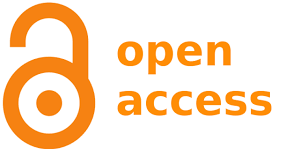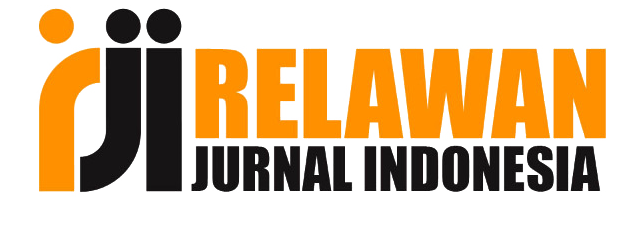Citation trends in islamic economics, finance, and business journals indexed by doaj and sinta
Abstract
This research analyzes the relationship between the number of journal volumes, Article Processing Charge (APC), journal names, and the number of citations on the Sinta, Dimensions, and Scopus indexes. This research method uses a descriptive approach, starting with collecting journals in economics, finance, and Islamic business, which DOAJ indexes on the Sinta portal. Then, each journal was mapped based on the number of volumes, APC, and journal name against the number of citations on the Sinta, Dimensions, and Scopus indexes. The analysis results show that journals with more than 10 volumes tend to have a higher average citation in Sinta and Dimensions compared to journals with 6-10 volumes or less than 5 volumes. However, the influence of the number of volumes on citations in Scopus is inconsistent, with several journals having less than 5 volumes but having the highest citations. In addition, Article Processing Charge (APC) also influence the number of citations, but not all journals with high APCs show a high number of citations. Free journals also have the potential to get high citations. Using English in journal names positively impacts the number of citations because it increases international accessibility, reputation, and global influence. Researchers and publishers can consider these findings in designing strategies to increase the visibility and impact of their journals.
Keywords
Full Text:
PDFReferences
Antelman, K. (2004), Do open access articles have a greater citation impact? College & Research Libraries, 65(5), 372-82. http://eprints.rclis.org/archive/00002309/01/do_open_access_CRL.pdf
Donner, P. (2018). Effect of publication month on citation impact. Journal of Informetrics, 12(1), 330–343. http://dx.doi.org/10.1016/j.joi.2018.01.012
Frantsvåg, J. E., & Strømme, T. E. (2019). Few open access journals are compliant with Plan S. Publications, 7(2), 26. https://doi.org/10.3390/publications7020026
Gruber, T. (2014). Academic sell-out: how an obsession with metrics and rankings is damaging academia. Journal of Marketing for Higher Education, 24(2), 165–177. https://doi.org/10.1080/08841241.2014.970248
Larivière,V., Gingras, Y., & Archambault, É. (2009). The decline in the concentration of citations, 1900–2007, Journal of the American Society for Information Science and Technology, 60(4), 858-862. https://doi.org/10.1002/asi.21011
MacRoberts, M. H., & MacRoberts, B. R. (1989). Problems of citation analysis: A critical review. Journal of the American Society for Information Science, 40(5), 342–349. https://doi.org/10.1002/(SICI)1097-4571(198909)40:5%3C342::AID-ASI7%3E3.0.CO;2-U
Maddi, A., & Sapinho, D. (2022). Article processing charges, altmetrics and citation impact: Is there an economic rationale?. Scientometrics, 127, 7351–7368 (2022). https://doi.org/10.1007/s11192-022-04284-y
Marchitelli, A., Galimberti, P., Bollini, A., & Mitchell, D. (2017). Improvement of editorial quality of journals indexed in DOAJ: A data analysis. JLIS.It, 8(1), 1–21. https://doi.org/10.4403/jlis.it-12052
Marlina, E., Setiorini, R.A., & Tambunan, K. (2015). Duplikasi artikel jurnal ilmiah Indonesia: analisis kualitas. Widyariset, 18(1), 115–126. https://download.garuda.kemdikbud.go.id/article.php?article=351305&val=8084&title=DUPLICATION%20IN%20INDONESIAN%20JOURNAL%20ARTICLE%20QUALITY%20ANALYSIS
Martín-Martín, A., Orduna-Malea, E., Thelwall, M., & Delgado López-Cózar, E. (2018). Google Scholar, Web of Science, and Scopus: A systematic comparison of citations in 252 subject categories. Journal of Informetrics, 12(4), 1160-1177. https://doi.org/10.1016/j.joi.2018.09.002
Moed, H.F. (2009). New developments in the use of citation analysis in research evaluation. Archivum Immunologiae et Therapiae Experimentalis. 57, 13–18. https://doi.org/10.1007/s00005-009-0001-5
Montgomery, S. L. (2013). Does Science Need a Global Language? English and the Future of Research. University of Chicago Press.
Morley, G., & Kerans, M. E. (2013). Bilingual publication of academic journals: motivations and practicalities. Supporting research writing (pp. 121-137). Chandos Publishing. https://doi.org/10.1016/B978-1-84334-666-1.50008-4
Muriyatmoko, D. (2018). Analisa volume terhadap sitasi menggunakan regresi linier pada jurnal bereputasi di Indonesia, Jurnal Simantec, 6(3). 129, 34 http://repo.unida.gontor.ac.id/113/1/Dihin%20Simantec.pdf
Piwowar H, Priem J, Larivière V, Alperin JP, Matthias L, Norlander B, Farley A, West J, Haustein S. (2018). The state of OA: a large-scale analysis of the prevalence and impact of Open Access articles. PeerJ. 2018 Feb 13;6:e4375. https://doi.org//10.7717/peerj.4375
Schönfelder, N. (2020), Article processing charges: Mirroring the citation impact or legacy of the subscription-based model?. Quantitative Science Studies, 1 (1): 6–27. https://doi.org/10.1162/qss_a_00015
Shamsi, A. F., & Osam, U. V. (2022). Challenges and Support in Article Publication: Perspectives of Non-Native English Speaking Doctoral Students in a “Publish or No Degree” Context. Sage Open, 12(2). https://doi.org/10.1177/21582440221095021
Silva Damasceno, F., & Vieira Vitorino, E. (2023). Digital humanities indexed in DOAJ: An analysis of scientific publications. In E.B. Alvarez (Ed.), Digital Humanities: Visions and Applications. Advanced Notes in Information Science, volume 3 (pp. 01-21). Pro-Metrics: Tallinn, Estonia.
Solomon, D. J., & Björk, B. C. (2012). A study of open access journals using article processing charges. Journal of the American Society for Information Science and Technology, 63(8), 1485-1495. https://doi.org/10.47909/anis.978-9916-9906-1-2.44
Suber, P. (2012). Open Access. MIT Press. https://doi.org/10.7551/mitpress/9286.001.0001
Tardy, C. (2004). The Role of English in Scientific Communication: Lingua Franca or Tyrannosaurus Rex?. Journal of English for Academic Purposes, 3(3), 247-269. https://doi.org/10.1016/j.jeap.2003.10.001
Turk, N. (2008), Citation impact of Open Access journals, New Library World, 109 (1/2), 65-74. https://doi.org/10.1108/03074800810846010
Van Weijen, D. (2012). The Language of (Future) Scientific Communication. Research Trends, 31, 7-8. https://www.researchtrends.com/researchtrends/vol1/iss31/3?utm_source=www.researchtrends.com%2Fresearchtrends%2Fvol1%2Fiss31%2F3&utm_medium=PDF&utm_campaign=PDFCoverPages
Van Leeuwen, T. N., Moed, H. F., Tijssen, R. J., Visser, M. S., & Van Raan, A. F. (2001). Language biases in the coverage of the Science Citation Index and its consequences for international comparisons of national research performance. Scientometrics, 51(1), 335-346. http://dx.doi.org/10.1023/A:1010549719484
DOI: https://doi.org/10.52626/jg.v7i2.356
Refbacks
- There are currently no refbacks.
St. Teknik II, Reumpet, Krueng Barona Jaya sub-district (23370), Aceh Besar District, Aceh Province, Indonesia.
http://geutheeinstitute.com/








